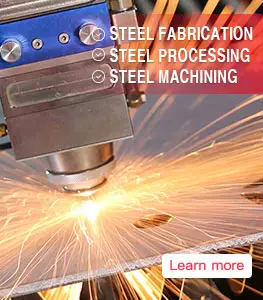Welcome to BBN Steel Materials Factory
ASME SA36 Carbon and Low-alloy Steel Plate Specification

ASME SA36 steel is a specification that covers carbon and low-alloy steel plates used in the construction of bridges, buildings, and other structures. The term "ASME" stands for the American Society of Mechanical Engineers, which is a professional association that promotes the advancement of engineering worldwide. ASME SA36 carbon steel specification provides a wide range of mechanical properties, including tensile strength, yield strength, and elongation. The properties of these carbon and low-alloy steel plates make them suitable for a variety of applications. Additionally, the plates provided under this specification can be manufactured using several different manufacturing processes such as hot or cold rolling, heat treatment, or quenching.
Thickness: 6-400mm
Width: 1250-2500mm, 1250-2500mm
Length: 1000-12000mm, 1000-12000mm
Tolerance: ±1%
Terms of payment: T/T,L/C at sight.etc.
Technique: Hot Rolled
ASME SA36 carbon and low-alloy steel plates are commonly used in the construction of buildings, bridges, and other structures. The plates provided under this specification have good mechanical properties, making them suitable for a wide range of applications. However, the primary uses of these plates are listed below:
1. Construction of Bridges:
ASME SA36 plates are used in the construction of bridges as they have good tensile strength and yield strength. The low-carbon content in the plates increases the weldability and impact resistance of the bridge components. The plates are also resistant to corrosion and weathering, which makes them suitable for use in different weather conditions.
2. Building Structures:
ASME SA36 carbon and low-alloy steel plates are also used in the construction of building structures such as pillars, walls, and columns. These plates have the required mechanical properties, such as strength and ductility, to withstand the weight of buildings and their occupants. The high thermal conductivity of these plates also makes them suitable for insulation purposes.
3. Industrial Machinery:
SA36 carbon and low-alloy steel plates are used in the manufacture of industrial machinery, including heavy-duty equipment and machines. These plates are used to form the frames and structures of machinery components, such as gears and pulleys. The plates' high ductility and toughness make them less prone to deformity and failure, ensuring the machinery's longevity.
4. Storage Tanks:
The plates provided under ASME SA36 specification are also used to manufacture storage tanks. The low-carbon content in the plates reduces the risk of corrosion and increases the plates' durability. The plates are suitable for storing both liquid and gas, as well as other materials that require storage under specific conditions.
Advantages of ASME SA36 Carbon and Low-alloy Steel Plates:
The ASME SA36 specification provides carbon and low-alloy steel plates with several advantages. Some of these are listed below:
1. Durability:
The plates provided under the ASME SA36 specification have high tensile strength, yield strength and are resistant to corrosion, wear and tear, and other environmental factors. These qualities make them robust and long-lasting.
2. Affordable Cost:
SA36 low-carbon content in the plates reduces their production cost, making them affordable compared to other high-alloy steels. This, combined with their high mechanical properties and durability, makes them an economical and popular choice in various industries.
3. Easily Machined and Welded:
SA36 Carbon and low-alloy steel plates are easy to machine and weld, making them easy to work with for manufacturers, fabricators, and builders. The plates can be cut into different shapes and sizes to match the specifications required by the clients.
4. High ductility and toughness:
The high ductility and toughness of the SA36 carbon steel plates provided under this specification ensure that the components manufactured from them are less prone to deformity and failure, ensuring the durability and longevity of the structure.
.webp)
.webp)
.webp)
.webp)
.webp)
.webp)
.webp)
.webp)
.webp)



Leave a Message